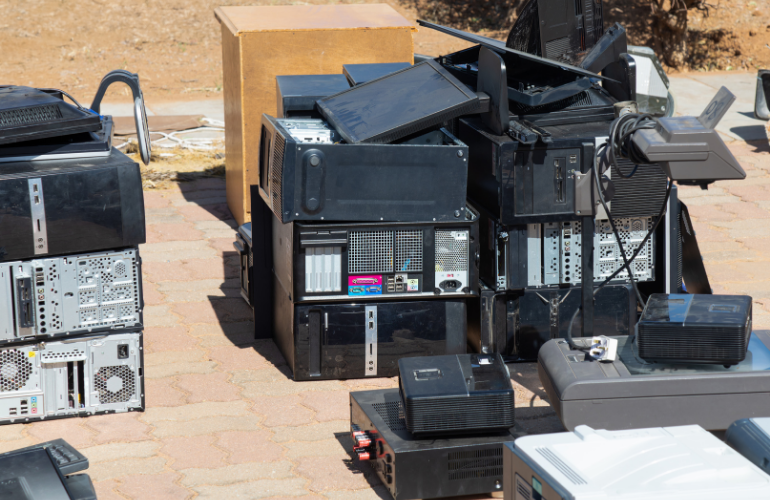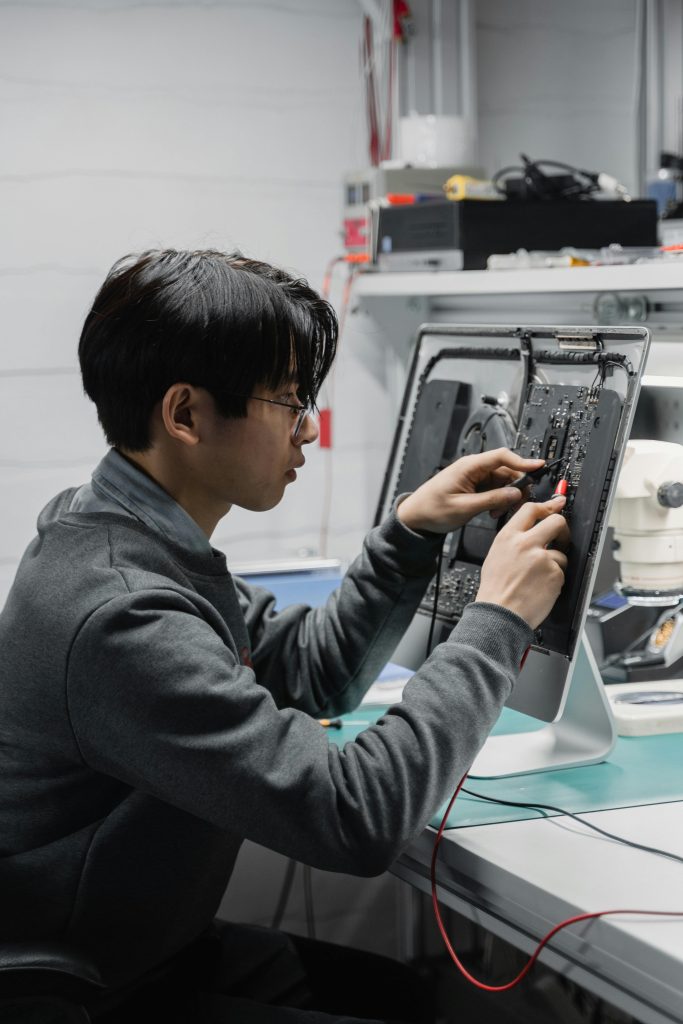In today’s fast-paced digital world, businesses continuously upgrade their IT infrastructure to stay competitive. However, what happens to outdated IT equipment? Improper disposal can lead to security risks, regulatory non-compliance, and environmental harm. This is where IT Asset Disposition (ITAD) comes into play, ensuring a sustainable and cost-effective solution for businesses in Malaysia.
Understanding IT Asset Disposition (ITAD)
IT Asset Disposition refers to the secure and environmentally responsible process of retiring outdated or unused IT equipment. Corporate IT disposal is not just about getting rid of old devices—it’s about maximizing value recovery, ensuring data security, and minimizing environmental impact.

Secure ITAD Services: Protecting Your Data & Business
One of the biggest risks in IT disposal is data security. Improper handling of old IT assets can lead to data breaches and compliance violations. Secure ITAD services ensure:
- Certified Data Wiping & Destruction to Prevent Data Leaks
Simply deleting files isn’t enough. Professional IT Asset Disposition (ITAD) services use industry-standard data sanitization methods such as DoD 5220.22-M, NIST 800-88, and sometimes physical destruction to permanently eliminate data from hard drives, SSDs, and other storage devices. - Regulatory Compliance with Local & International Standards
Companies handling personal, financial, or confidential data must comply with data protection laws like Malaysia’s PDPA, GDPR (Europe), and ISO 27001. Non-compliance can lead to hefty fines and reputational damage. - End-to-End Tracking & Reporting for Transparency
A secure ITAD process includes asset tracking, detailed reporting, and certificates of data destruction, ensuring full accountability and transparency in how IT assets are handled and disposed of.
How ITAD Helps Businesses Save Money
- Cost Recovery Through Remanufacture, Refurbishment & Resale
Many IT assets still hold value even after they are no longer needed by a company. Secure ITAD services enable businesses to recover a portion of their initial investment by selling their retired IT equipment for remanufacturing and refurbishment IT equipment instead of just scraping it.

- Avoiding Heavy Fines & Compliance Risks
In Malaysia, improper disposal of electronic waste can lead to regulatory fines and non-compliance issues. Adhering to environmental and data protection laws ensures businesses avoid unnecessary financial penalties. Under Section 34B of the Environmental Quality Act 1974 (Act 127), offenders can face penalties of up to RM500,000 or five years’ imprisonment or both for illegal dumping activities. - Reducing IT Storage & Maintenance Costs
Storing unused IT assets takes up valuable office space and leads to unnecessary maintenance costs. ITAD helps declutter workspaces while reducing overhead expenses. - Lowering Procurement Costs via IT Remanufacturing & Refurbishment
Through ITAD programs, companies can access remanufactured and refurbished IT equipment at lower costs instead of purchasing brand-new devices, resulting in significant savings.

Reducing E-Waste for a Sustainable Future
The environmental impact of e-waste is alarming. According to data from the Environment Department, Malaysia generates an astonishing annual volume of e-waste exceeding 365,000 tonnes, surpassing the weight of the iconic Petronas Twin Towers. Without proper disposal, toxic materials such as lead, mercury, and cadmium from IT equipment can contaminate the environment.
How ITAD Supports Sustainability
- Recycling & Proper Disposal: Ensures IT waste is processed responsibly, preventing harmful chemicals from polluting the environment.
- Extending IT Lifespan: Through remanufacturing or refurbishment, businesses can contribute to a circular economy by giving IT assets a second life.

- Reducing Carbon Footprint: Manufacturing new IT equipment generates significant carbon emissions. By opting for ITAD, companies help lower their overall carbon impact.
Empower the Next Generation with Rentwise Digital Learning Empowerment Program (DLEP)

A transformative initiative designed to bridge the digital learning gap in under-resourced schools. By partnering with our clients, we repurpose 20% of our retired IT equipment through remanufacturing, and then donate these remanufactured devices to underserved schools. This effort not only provides essential technology for productive IT-related lessons but also inspires students to explore the vast opportunities in the digital world. With DLEP, Rentwise is committed to creating a sustainable, tech-enabled future for young minds who need it most.
Get a Free ITAD Consultation Today!
If your company is looking for a reliable IT asset disposition service in Malaysia, Rentwise offers secure, compliant, and environmentally responsible ITAD solutions.

















